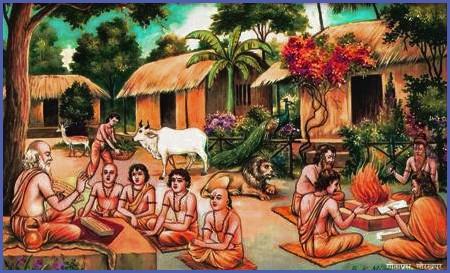Tagged: disciple., finding a guru, guide, Guru, guru-shishya relationship, Hinduism, intellectual growth, liberation, mentor, qualities of a guru, self-realization, spiritual growth, spiritual guide, teacher
- This topic has 0 replies, 1 voice, and was last updated by .
-
AuthorPosts
-
March 16, 2023 at 5:24 pm #997Up::10
The actual meaning of guru.
The guru is a spiritual instructor who directs the student’s spiritual development and enlightenment. The term “guru” is derived from the Sanskrit language and is made up of two words: “gu” for darkness and “ru” for light. As a result, a guru is someone who dispels darkness and provides light into the student’s life. The guru is thought to have the power and knowledge to enable the disciple transcend the worldly realm and achieve spiritual enlightenment. The guru is not restricted to a specific caste or gender. The guru might be either a man or a woman, from any caste or socioeconomic class. Spiritual understanding, wisdom, and compassion are the most significant requirements for becoming a guru.

Importance of guru.
The guru’s significance in Sanatan Dharma may be traced back to the Vedas, the ancient texts. According to these writings, a guru is someone who knows the ultimate truth and can guide others to it. The guru is viewed as a conduit between the person and the divine, assisting people in connecting with the divinity inside themselves. The guru is also in charge of directing the individual’s moral and ethical behaviour, personal connections, and everyday activities. Individuals are expected to follow the guru’s example in all parts of life, and the guru is viewed as a model of behavior.

Role of guru in sanatan dharma.
The guru is seen as an incarnation of God in Sanatan Dharma. The guru is said to be a heavenly intermediary between the learner and God. The pupil can connect with the divine and experience the ecstasy of spiritual enlightenment under the tutelage of the guru. The guru’s significance may be traced throughout the history of Sanatan Dharma. Several of this tradition’s great spiritual teachers, including Swami Vivekananda, Ramakrishna Paramahamsa, and Shankaracharya, all had gurus who mentored them on the path of spiritual development.

Relationship between guru and shishya (student)
One of the most important connections in Sanatan Dharma is that between the guru and the shishya. It is a relationship founded on mutual respect, trust, and devotion. The guru is the spiritual instructor, while the shishya is the learner who seeks direction and wisdom from the guru. The shishya is supposed to give his or her ego, wants, and attachments to the guru and to accept the guru’s instructions without inquiry.

Attachments:
You must be logged in to view attached files. -
AuthorPosts
- You must be logged in to reply to this topic.